Daikon - why the Japanese love it so much and eat it almost every day (20 photos)
The Japanese love daikon - a long white radish, they grow it in their gardens and, probably, I won’t be wrong if I say that they eat it every day. In stores, it is striking that white root vegetables stick out from almost every grocery basket. 
The Japanese claim that daikon is very healthy and incredibly tasty.
Since ancient times, unique local varieties of varying pungency, shape and size have been grown throughout the country. And now it is the most produced vegetable in Japan. 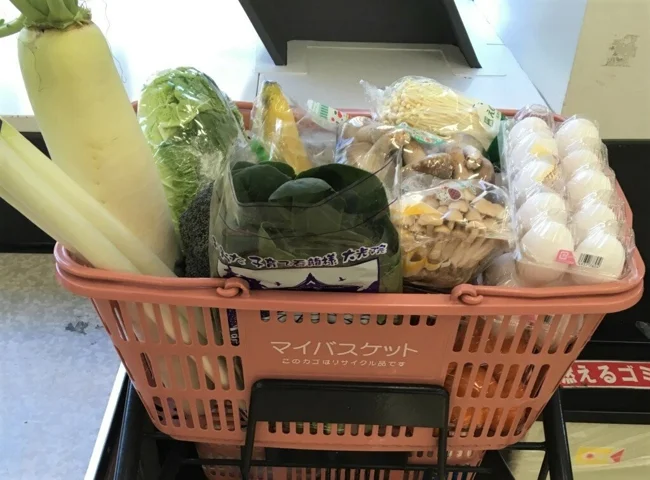
Basically, sweet and juicy daikon with a greenish “neck” is common - the part located closer to the leaves. It reads sweeter and is ideal for salads, and the part that is closer to the tip is spicier, so it is more often used for seasonings and pickles. The middle of the root vegetable is good for simmering dishes such as oden and furofuki daikon (boiled). 

In addition, Japanese radish leaves are also very tasty and rich in nutrients. It is recommended to finely chop them and prepare a salad, add them to miso soup when cooking, or even better: fry them in sesame oil, season with bonito flakes, soy sauce and place on top of the rice. 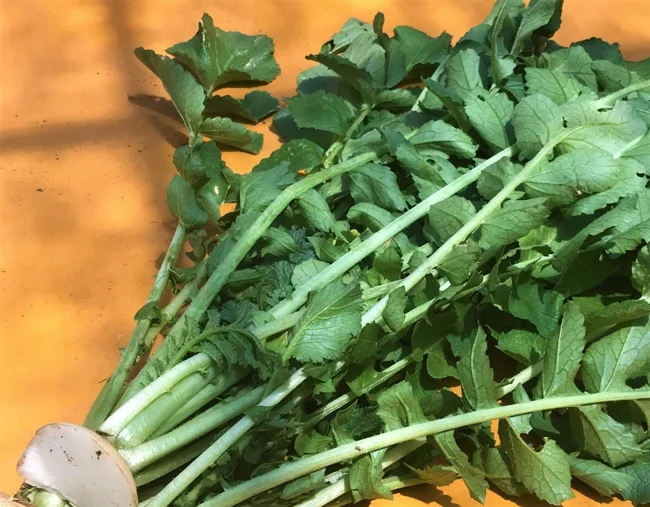
Daikon leaves contain many nutrients, such as β-carotene, which is low in the root vegetable itself.
The Japanese also pickle radish greens and use them to obtain juice, which contains a lot of vitamin A, vitamin C and amylase, an enzyme that breaks down starch.
So, don't throw away the leaves! They are very healthy and tasty -
It’s not for nothing that the Japanese love both the tops and the roots of daikon so much! 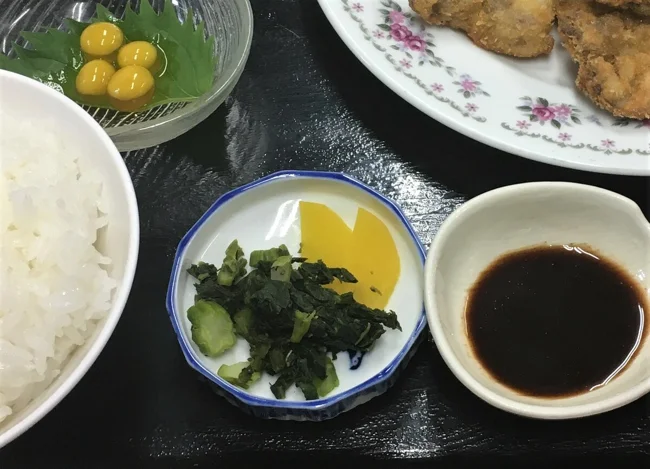
Daikon pickles (eggs and turtle meat soup)
Is Japanese daikon different from ours?
Daikon radish (scientific name: Raphanus sativus var. Hortensis) is a perennial herbaceous plant of the Cruciferous radish genus. Grows in the Mediterranean and Central Asia. In Japan, China, Europe and other regions, the roots and leaves are widely used as food, and oil is extracted from the seeds.
It is believed that Japan grows the largest daikon, the heaviest and longest in the world! 
In addition, daikon is an indispensable vegetable on the Japanese table; there are a huge variety of ways to serve and prepare it: eaten raw, boiled, stewed and pickled. 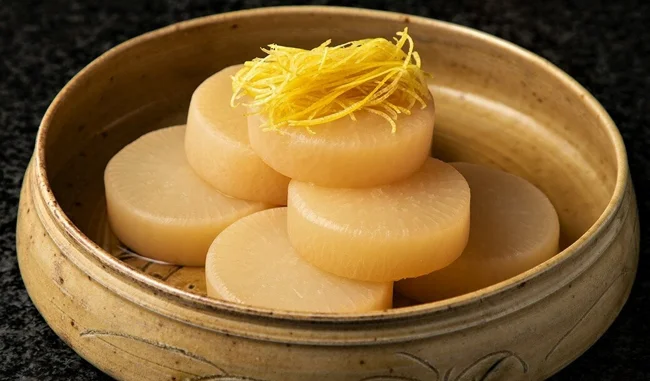
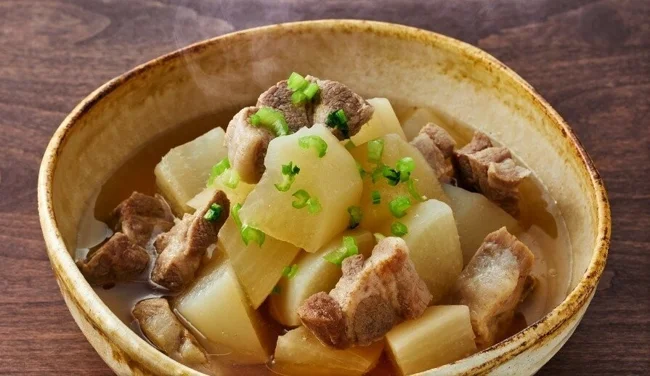
Furofuki daikon (boiled)
Dried or pickled for storage.
Fresh daikon is grated and served with fried and fatty dishes, as well as tempura. 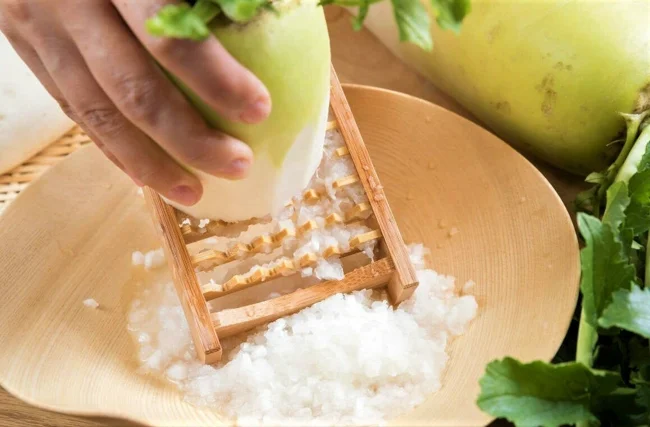
Stewed daikon is very popular. Place radish slices in oden*. Taro believes that daikon is the most delicious in oden!
(Oden* consists of different products: daikon, boiled eggs, konnyaku, tofu, fish and meat balls, all stewed in a pot in dashi broth with soy sauce. Eaten with Japanese mustard - karashi). 
Fresh pieces of fish (sashimi) are served on daikon, cut into thin strips. 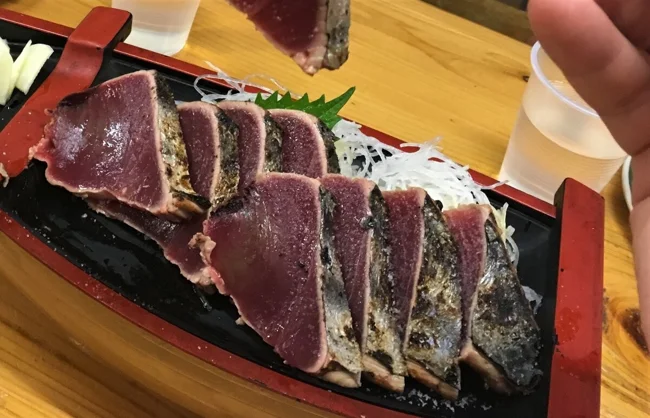
Katsiotataki on daikon
They eat grilled fatty fish with it. 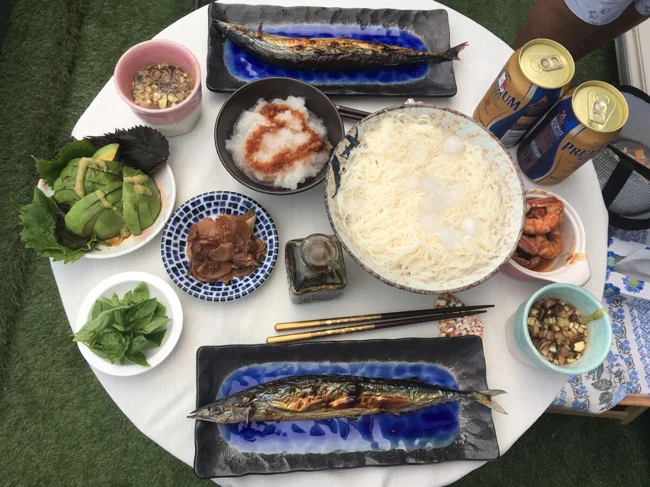
This fish is eaten with grated daikon
In addition, the Japanese consider daikon a medicinal plant, as it contains digestive enzymes and has antithrombotic (prevents the formation of blood clots) and detoxifying (relieves the body of toxins) effects. Daikon juice is taken as an expectorant to treat stomach diseases.
In Japanese folk medicine, daikon is known as a cure for obesity. (Doctor's consultation required). 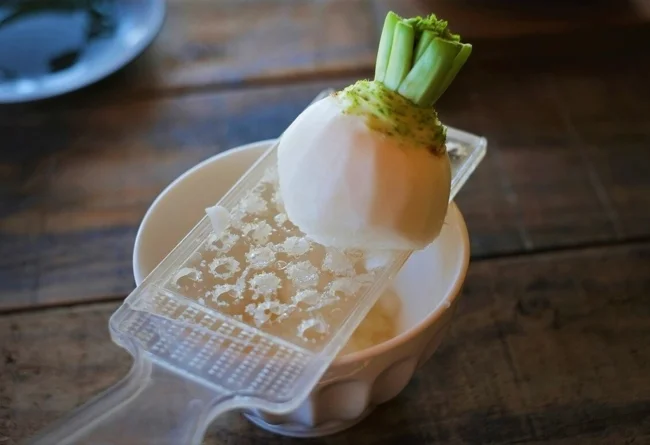
It is believed that this radish came to Japan from China (the Japanese laugh: “Well, everything came to Japan from China - everything that grows, runs, crawls and flies, and before that, apparently, there was bare land in Japan!”), name comes from the ancient Chinese character meaning "big root".
But the Japanese claim that this plant is “one of their own” on their islands; it differs from other overseas and Chinese species. 
And research by Japanese scientists has shown that genetically Japanese daikon is very different from European and Nepalese, somewhat close to South Chinese, but still different. Tohoku University analyzed and published genomic information on 500 daikon varieties from around the world, according to which each species is divided into 4 groups, and the Japanese daikon forms its own.
As for the native Japanese daikon species, it is said that in 1980, 110 varieties were recorded throughout the country. 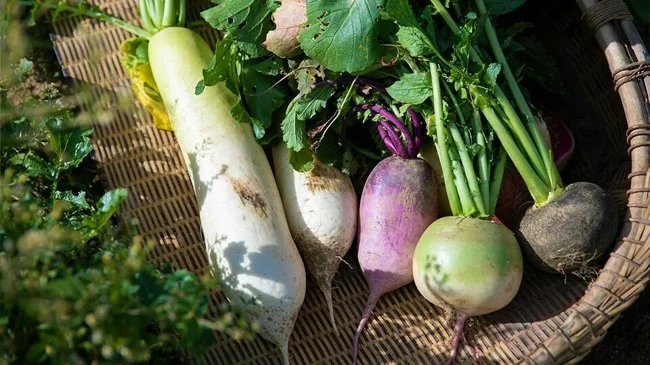
There are various theories about the appearance of this plant. It is known that in Ancient Egypt (in 2200 BC), daikon, similar to what the Japanese now call "hatsuka-daikon" (in our language - "radish"), was used as food for the builders of the pyramids.
The plant later spread to various parts of Eurasia; it first appeared in China in the 4th century BC. Then daikon began to spread throughout Europe - in England it began to be cultivated in the 15th century, and in France around the 16th century. 
Reproduction from the late Edo period
In Japan, daikon has been mentioned since the Yayoi period (300 BC - 300 AD). This garden vegetable was widely consumed, and several varieties were developed and cultivation methods developed during the early Edo period (1603-1867). 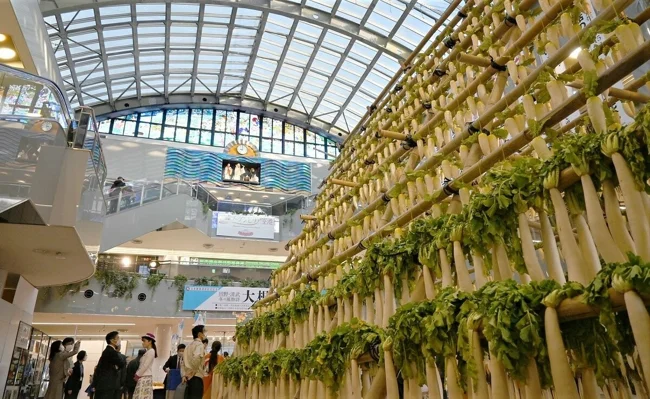
At Miyazaki Airport, daikon exhibition
Daikon was important to the Japanese and as a long-lasting canned product, it was a lifesaver during crop failures and winter.
Already in those days, different methods of processing this vegetable were developed for each region - in some places it was salted, in others it was chopped and dried. 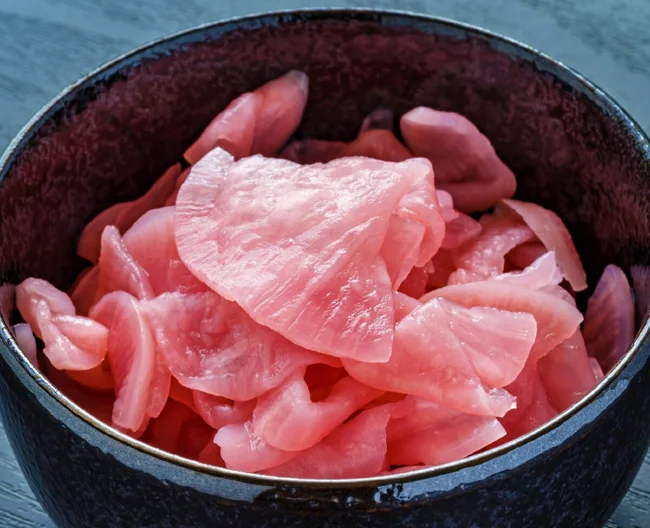
Daikon marinated with ume (plum) juice
And now the Japanese cannot live a day without their beloved daikon! Everyone knows that this root vegetable is very good for health, contains many vitamins, minerals, dietary fiber, as well as digestive enzymes that break down starch (contains: saturated and polyunsaturated fatty acids, protein, B vitamins, vitamin C, minerals (sodium, potassium , calcium, magnesium, phosphorus, iron, zinc, copper, manganese, selenium), water-soluble and insoluble dietary fiber). 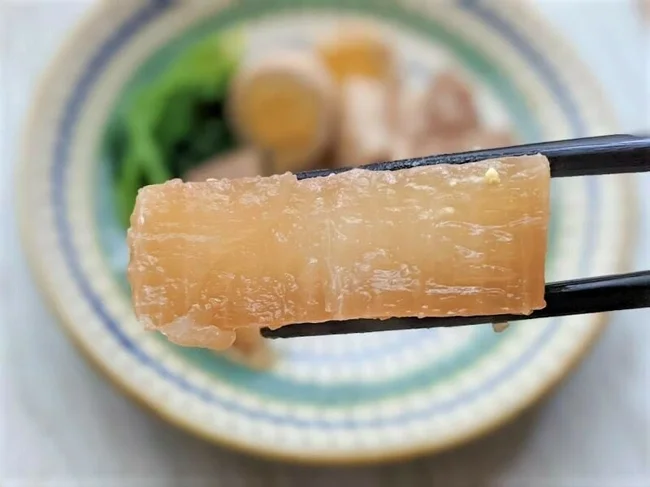
In recent years, overseas varieties of daikon of all colors have appeared in Japan - from red-violet to black. But our own, white, with a green neck, is revered and loved by the Japanese more than anyone else.
I wrote an article and I wanted to cook daikon urgently!
